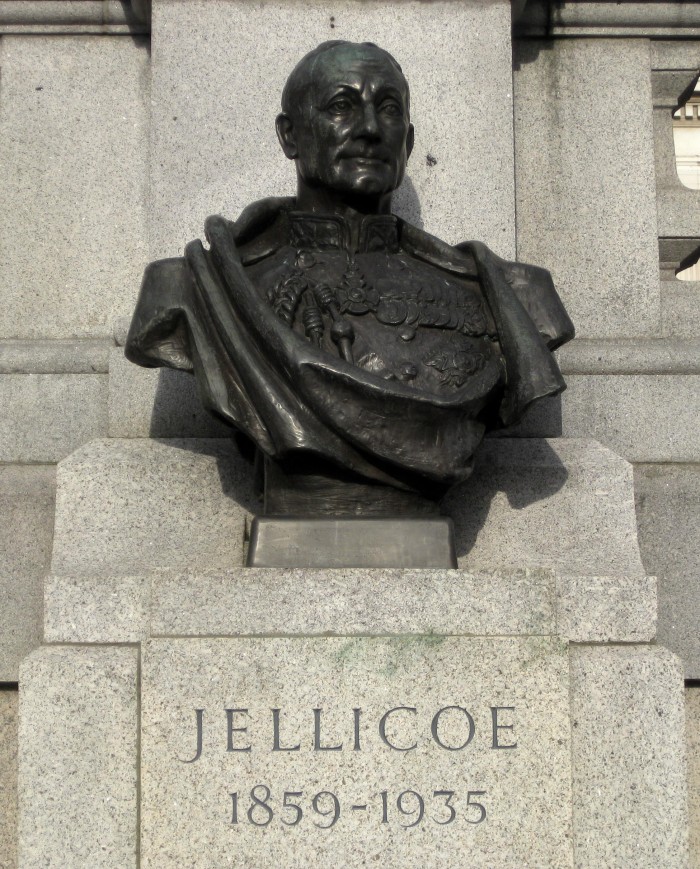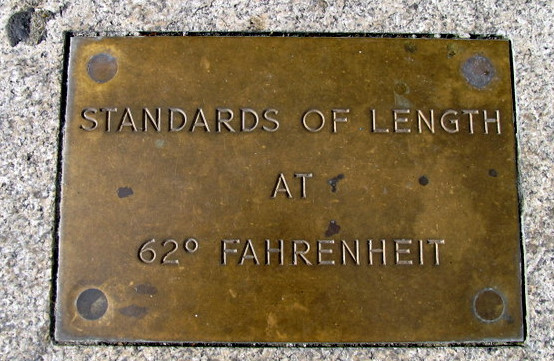
The painting above is of the NE corner of Trafalgar Square and St. Martin-in-the-Fields in 1888. It hangs in Tate Britain and it is by William Logsdail. In case you missed it, the first part of my paean to Trafalgar Square is here: Love London, Part 1. Trafalgar Square, Nelsons Column and Charles I, London WC2.

On the lower northern wall of the square are busts of three First Admirals of the fleet; Cunningham, Jellicoe and Beatty. Admiral Andrew Cunningham was distinguished veteran of WWII and his bust was added after the other two in 1967. Jellicoe and Beatty are Admirals of WWI and their busts were placed in 1948, facing Nelson, “Hero of the fleet”. I hope it is true that they both admired Nelson as much as they are supposed to, because upon their deaths, in late 1935 and early 1936, they were both entombed in St Paul’s Cathedral, also facing his tomb.

Also on the lower northern wall of square is an often overlooked historical treasure “The Trafalgar Square Standards”. They are low down along the steps and in the wall behind the seats. These were the official British Imperial measurements of length until we adopted the metric units of measurement in 1995. These were set into stone, by the Standards Department of The Board of Trade, in 1876 and if you suspected that any measuring implements were incorrect you could bring them here to settle the argument. There are three sets of these official standards, the others are in the Royal Observatory in Greenwich and in the Great Hall of the Guildhall in the city. The official measures included are; the inch, foot, yard, link, chain, perch and pole.

There are four plinths built to contain statues in the square. The two on the south side of the square contain statues of Victorian Major Generals, Napier and Havelock. They both served with distinction in the campaigns in India. The third plinth is occupied by an equestrian statue of George IV. It was commissioned by the King himself and depicts him riding bareback, without stirrups and in ancient Roman dress. He intended it to be placed on the top of the Marble Arch, but it was put here in 1843.

The fourth plinth was intended to hold a statue of William IV. It was empty for over 150 years until 1999 when it was decided to put a succession of works of art on the plinth, each occupying it for a limited amount of time. These art pieces have generated a great deal of debate over that past twenty years and, in that respect, the concept has certainly been a success. All of them have been controversial, most of them have been innovative and some of them have been attractive. Among the more memorable are; Anthony Gormley’s “One & Other” where over the course of 100 days, 2400 different people each spent one hour on top of the plinth, Marc Quinn’s “Alison Lapper Pregnant” and Yinka Shonibare’s “Nelson’s ship in a Bottle”. The current incarnation, Michael Rakowitz’s “The invisible enemy should not exist” is a recreation of a sculpture of a Lamassu (a winged bull and protective deity) that stood at the entrance to Nineveh from 700 B.C. It was destroyed in 2015 and this piece is made completely from empty Iraqi date syrup cans. I find it beautiful.

On the South Eastern corner of the Square is a round edifice with a light on top. This is claimed, by some, to be the smallest police station in the world. Put in temporarily in WWI but made permanent during the general strike of 1926, it is a raised room from which a policeman could stand and watch the square in order to phone Scotland Yard, if a demonstration in the square showed signs of becoming dangerous. When the light was changed from gas to electric, the light used to flash when the phone rang, in case the assigned policeman was patrolling the square.

I have a couple of pieces other random trivia about Trafalgar Square. The north side of the square is substantially higher than the south. This slope is not natural, the south end was lowered in order to made the National Gallery building more imposing. The earth was used to level St James’ Park. Adolf Hitler planned to remove Nelson’s column and statue from Trafalgar Square when Germany conquered Britain. His intention was to place them in Berlin as a victory trophy.

While you visit Trafalgar Square, you should visit St Martin-in-the-fields on the NE corner and the National Gallery. I plan to do separate pieces about these. I will put links here when I have completed them. Also, on the South side, between Whitehall and The Mall, there is an unobtrusive hotel called The Trafalgar. This is a smart hotel and if you go to the back you can catch a lift up to a rooftop bar. The cocktails are central London prices, but they are good and the roof terrace has lovely views over the square.
[…] Part 2 of the Trafalgar Square post is here: Love London Part 2. Trafalgar Square, George IV, Victorian generals and the Fourth plinth. […]
LikeLike
The slope is very noticeable at the end of a long run, let me tell you! And like you I love the current work on the plinth. I also love going across around 7:30 in the morning when the falconer and his bird are there sorting out the pigeons.
LikeLiked by 1 person
That sounds lovely, I didn’t know that the falcon was still there, I assumed they had been retired! That’s another nice piece of information about the square, thank you.
LikeLike
I think they’re only there occasionally now, but they seem to have had the desired effect! By the way I know last year if you wanted to get into the bar on the roof of the Trafalgar they were charging for entry, regardless of whether you bought a drink or not. Separately, I was going to blog about the walk I took that included Trafalgar Square. May I refer any readers I have to your blog and in particular this piece?
LikeLiked by 1 person
Wow. That’s cheeky for them to charge, we must have been lucky, we just went up and ordered. I remember the days the square was overrun with pigeons – its much better now. I would love you to reference this piece. Thank you very much!
LikeLiked by 1 person
wow, that’s so cool, thanks for sharing.
LikeLiked by 1 person
I was talking recently to the falconer who has the job of keeping pigeons off One Hyde Park, the uber-expensive apartment block on Knightsbridge. He had a big, mean-looking South American hawk called Harris’s hawk with him, and he said that the same species of hawk was used to clear Trafalgar Square.
LikeLiked by 1 person
How good! What a fantastic job to have!
LikeLike